9 Practical Tips & Locations for Sailing the Mediterranean
Planning to sail the Med - or at least dreaming about it, like I am? Let me help you out with some real tips, not that obvious 'go to Croatia'-stuff.
It's so easy to be overwhelmed by all the great sailing areas there. And if you're almost leaving, it will be even worse, since you need to remember all the practical stuff as well.
So where to go, and what to expect? In this article I try to avoid giving the obvious tips, like: 'go to the Adriatic Sea'. Of course I'll go there.
Instead I try to give you the nitty gritty, some really cool hidden gems. And after the jaw-dropping pictures, I also have some more practical tips that you can actually use for planning your trip.

On this page:
- Popular Sailing Locations in the Med
- Some Lesser Known Locations
- Head for Safe Harbor in Unsettled Weather
- Be Vigilant in Strong Wind Areas
- You Don't Have To Own a Sailboat
- You Need Your Certificate (ICC)
- You Can't Just Anchor Everywhere
- There's a Special Way of Mooring Here
- Some Charter Companies to Consider
- Related Questions
What About the Med?
Sailing the Mediterranean can be a very rewarding experience. Since there are no tides, navigation is easy, and the sailing season is long, thanks to the mild climate. The diversity of cultures, scenery, landscape, and sea conditions is mind blowing. You're eating a platter of seafood, sail a bit, dock your boat a couple of hours later, and find yourself eating freshly made pasta.
Some experienced Med sailors say it can take you literally more than ten years to sail this warm and forgiving sea. I can see why, with all this great food, great coastlines, and wonderful 26°C (or 80°F) waters.
Popular Sailing Locations in the Med
Main sailing areas:
- Western Mediterranean - this is the area spanning from the Straits of Gibraltar to the heel of Italy
- Adriatic - separating the Italian coast from the coast of Croatia, Montenegro, and Albania
- Greece - the Aegean and Ionian Sea
- Turkey
- The Levant - the Eastern Med
- North Africa
Looking to Charter a Sailboat?
I recommend taking a look at Cool Sailing Charters
They will help you out with finding the perfect boat and destination for your budget, and advise on what licenses you need. Read my full recommendation here.
Most popular sailing destinations
- Croatia - Adriatic
- Corfu - Ionian
- Côte d’Azur - West Med
- Sardinia - West Med
- Malta - North Africa
Croatias Dalmatian Coast
Alright, it's here, Croatias beautiful Dalmatian Coast had to be on this list. It's the southern region of Croatia, running all the way from Split to Dubrovnik, where the coastline only runs 50 km wide.
These waters are protected across the entire coast line by parallel-running islands off shore. That's why these waters are very comfortable to sail, except for when the Bora winds come rushing in (see tip 3 and 4).
The main attraction are the old city walls, ending at Bellevue Beach. The walls of Dubrovnik are a truly magnificent sight from the sea:

Dubrovnik also has a beautiful Old Town, with 16th-century Baroque buildings and limestone streets. A 10-minute ferry ride from shore there is the island Lokrum: a forrested island filled with oaks, olive trees and pines.
Learn more about the documents and certificates you'll need to charter a boat in Croatia. Read my article The Exact Bareboat Charter Requirements in Croatia here.
Corfu in the Ionian Sea
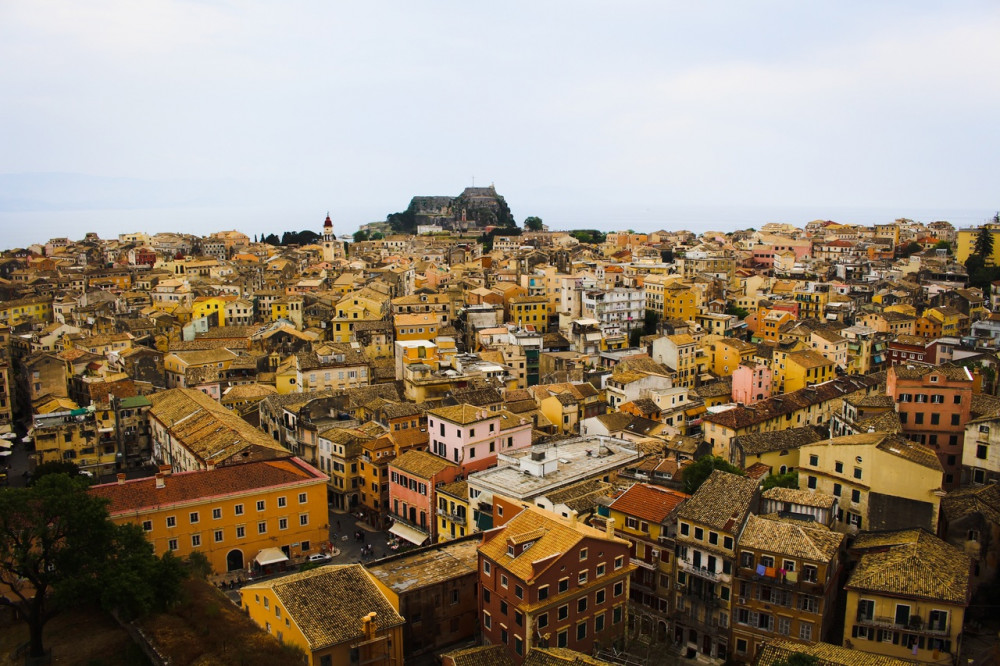
A large, rugged island that's well-known among sailors. It's one of the most common starting islands for chartered yachts.
It makes up the northwestern part of Greece, being one of the largest islands, and is a melting pot of cultural influences, which is reflected in the architecture. It's more Western than the rest of Greece, since it was never under Ottoman rule.
It's Old Town is on UNESCOs World Heritage List.
The Côte d’Azur has the Best Food
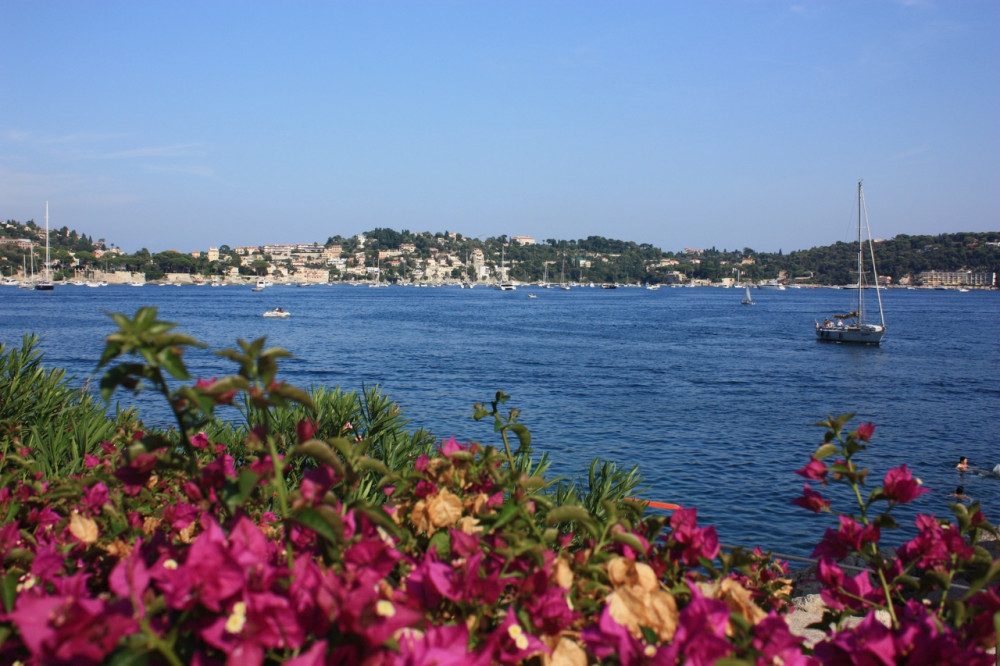
The Côte d’Azur literally means Bright Blue Coast, which is a great name. It's the southeastern coastline of France, from Cassis to Italy. There are a lot of tourists. Did you know it was one of the first modern resort areas in the world?
But it's definitely worth a visit, especially if you like café life, hopping from marina to marina, while fine-dining on the seaside.
It also has great cities to explore, with Nice being its pièce de résistance.
Sardinia has Strong Summer Winds

Sardinia offers more challenging sailing, thanks to its strong summer winds. Sailing it counter clockwise is easiest. The north and northeast of Sardinia has plenty of anchorages, but it gets crowded in summer, as it is one of the most popular sailing destinations.
Malta has the Most Cultures

Lonely Planet calls Malta a micro-cosmos of the Mediterranean itself. Thanks to it's very rich cultural history it really is. It's been ruled by the Romans, Moors, Knights of St. Johns, the French, and the British.
It has palaces, temples, churches, fortresses, and wonderful sailing as well.
It's a good wintering destination, although the berths are crowded, so you have to be patient.
Amalfi Coast is the Most Italian
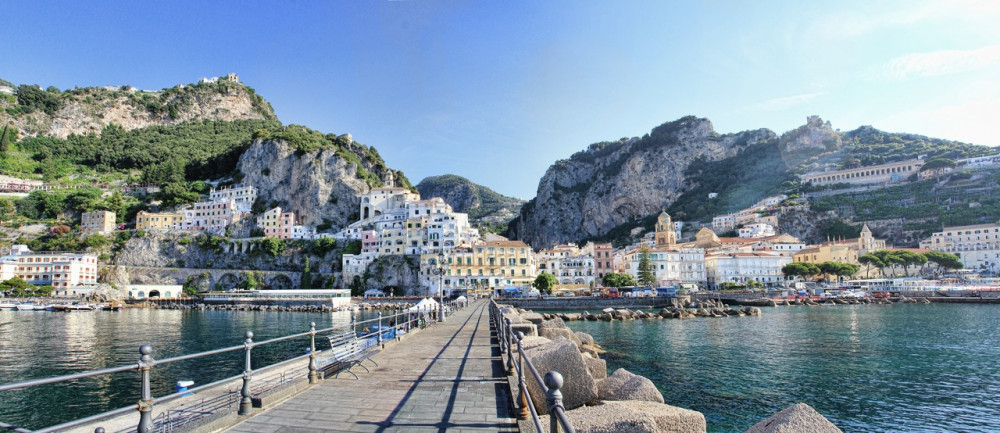
Amalfi is a 50-km long stretch of coastline on the southwestern side of Italy. It's a beautiful sailing region, with high coastal cliffs with large amounts of villas facing sea side on it, and lots of small fishing villages and tiny beaches.
UNESCO calls it 'one of Italy's most memorable destinations'.
Charter a Sailboat at Cool Sailing Charters
They will help you out with finding the perfect boat and destination for your budget. Read my full recommendation here.
Some Lesser Known Locations
- Lefkada in the Ionian Sea
- Hydra, Greece
- Tétouan, Morocco
- Polignano a Mare, Italy
- Navagio Beach, Greece
Lefkada in the Ionian Sea

South of Corfu lies Lefkada, with traditional villages and beautiful beaches surrounded by tall cliffs, like Porto Katsiki and Egremni.
Lefkada is called the Caribbean of Greece, because of its incredibly blue waters.
There aren't a lot of foreign tourist there, however, tourism is starting to increase. So beware if you like it peaceful and quiet.
Hydra, Greece

Hydra is an island in the Aegean sea that doesn't allow cars or motorcycles. It's only accessible by boat. It is a very popular tourist destination in the high season. These are mostly weekend tourist from Athens. It's also said to be one of the most impressive islands in the Saronic Gulf. So maybe it's worth it? Just make sure to go on weekdays.
The Aegean sea is a bit more challenging than the Adriatic sea, as it's waters are less sheltered.
Tétouan, Morocco
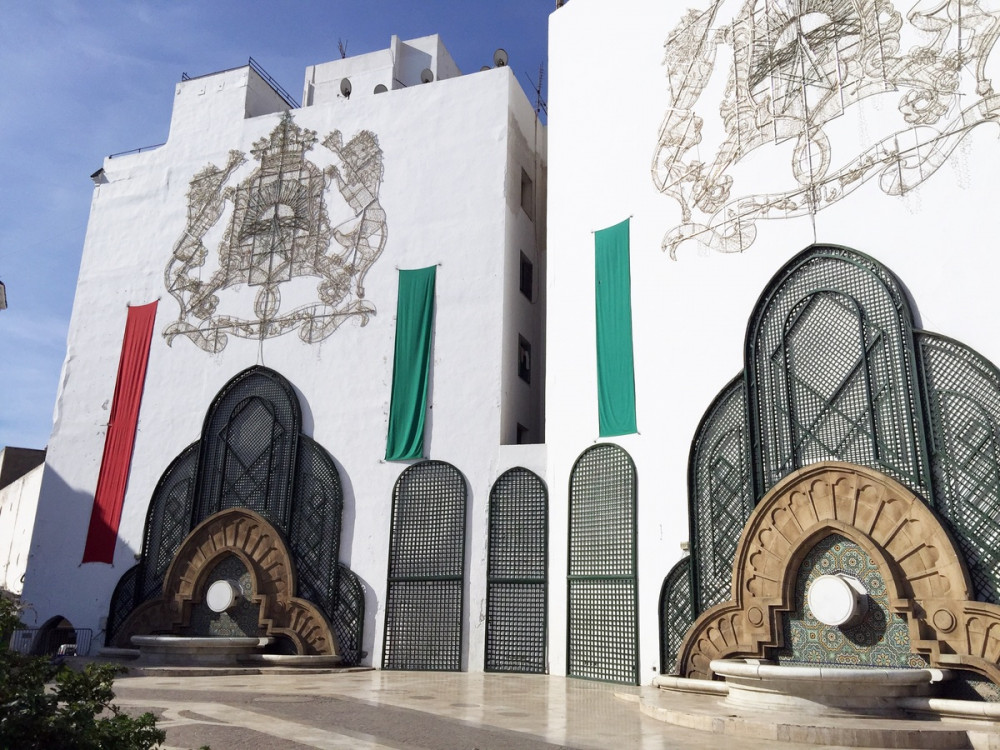
Tétouan is one of the two major ports (the other is Tangiers). It's nicknamed the white city, and no wonder why. It's pretty large, with over 300,000 inhabitants. It's old town (medina) is on the UNESCO World Heritage list.
It hosts a lot of events along its long coastline, with golf resorts, marinas, and plenty of clubs and hotels.
Also a great wintering destination, with temperatures staying around 10°C (50°F) during winter.
Polignano a Mare, Italy
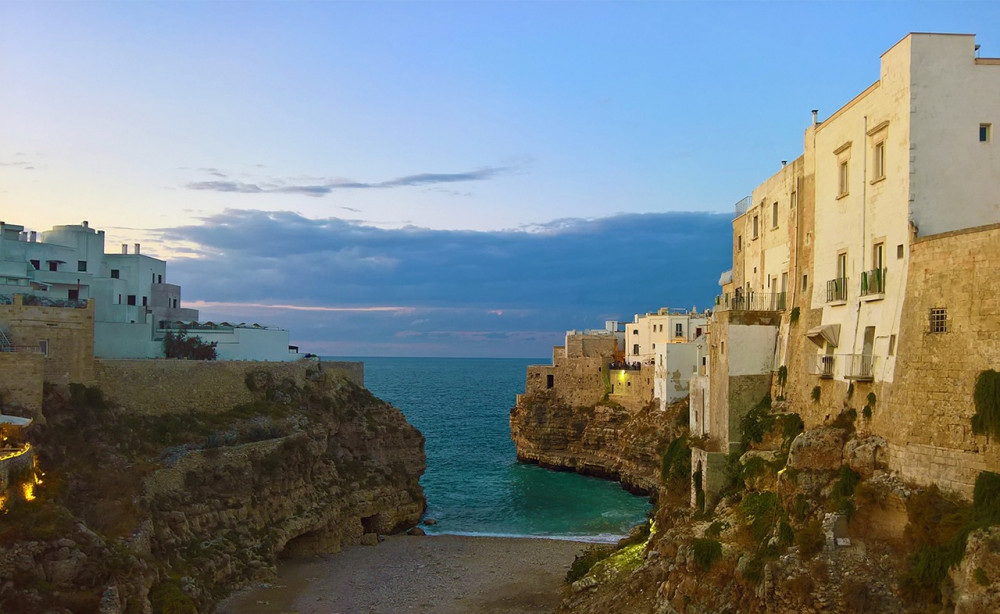
Set on a 20-meter high limestone cliff, Polignano rises above the crystal clear Adriatic. It has traditional white houses with winding streets running through them, just as you'd expect from a real Italian masterpiece.
It's famous for cliff diving (for example at Blue Flag Beach) and it's great gelato (ice cream), so that would be plenty of reason for me to visit.
Navagio Beach, Greece
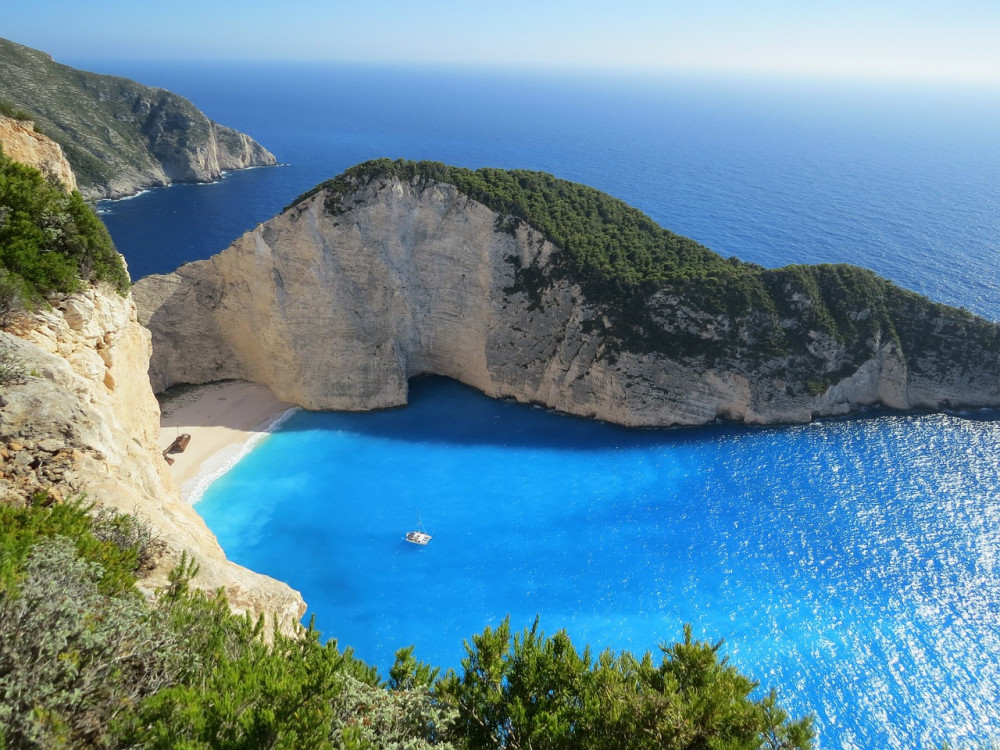
South of Lefkada, we find Navagio Beach, a small stretch of beach between rocky cliffs. It's also called Smugglers Cove because of an exposed cave, which is called ... well, a smuggles cove.
The freight liner MV Panagiotis ran ashore on Shipwreck Beach and still rests beneath the limestone there.
Bonus: Some great coastal restaurants in the Med:
- Club Dauphin on the French Riviera
- Anacapri, Il Riccio, Italy
- Bagni Sillo, Sori Italy
- Restaurant Miramar, Mallorca
Here's a map with all the locations mentioned above:
Head for Safe Harbor in Unsettled Weather
The Mediterranean can be quite rough, but it's mostly very smooth sailing.
The weather can be what's called settled or unsettled.
- In settled weather, you'll mostly have lots of sun, some clouds, a light breeze, and warm and stable temperatures.
- In unsettled weather, you'll have heavy clouds and multiple days of rain, for example.
With settled weather, the forecasts are very reliable, and generally the weather won't change rapidly.
With unsettled weather however, it get's rough pretty quickly - and it's worse than on most oceans. Thunderstorms, tornados, heavy wind gusts, and rapidly shifting wind. The Mediterranean isn't a good place to be right now.
It's recommended to find a sheltered harbor as quickly as possible in case the weather changes from settled to unsettled.
The weather gets as reliable as it gets here, with the summer months being mostly settled, and the winter months being partly unsettled. The transitional month between summer and winter (October) and winter and summer (April) is rougher, with more unsettled weather.
Be Vigilant in Strong Wind Areas
The Med has four major strong wind areas. These are:
- the Straits of Gibraltar - gets closed off frequently due to strong winds of over F5, preventing windward passage
- the Golfe du Lion - these winds can reach up to the Sicily Straits, and are most prevalent in winter time
- the Northern Adriatic - the Bora is notorious for 40 knots gusts, coming from the northeast unexpectedly
- the Southern Aegean Sea - winds of F7 from late June to mid-September, due to the extreme heating of the land
If you like smooth sailing, be extra vigilant in these areas. They are known to surprise people over and over again.
You Don't Have To Own a Sailboat
The Mediterranean is Charter Heaven. There are so many charter companies, it's almost a shame not to use them. We're speaking of more than 6,000 companies.
- Croatia has 2,700
- Greece has 1,700
- Italy has 1,400
- and Turkey has 800
There are two types of chartering: manned and bareboat. If you don't want any crew, make sure to choose bareboat. You will have to show them your ICC.
The average price for a bareboat yacht per week is € 2,600. The prices range anywhere between € 1,000 - € 3,100. In the Med West, along the Spanish, French, and Italian coastline, prices are the highest. They typically get lower the further you go east.
The average price for a yacht with crew is about € 5,000 a week.
Chartering a yacht is sometimes a great option to skip the entire Atlantic trip to get to the Med (which can be frustratingly crowded). You just fly in, hop on the boat, which is all prepped and taken care of, and off you go.
If you book last minute, prices can get as low as € 700 a week. Which you practically save by not sailing along the Atlantic shore, where marina prices can get as high € 30-40 a night.
So chartering can be interesting for people that don't have the time to sail all the way to the Adriatic, or don't like the Atlantic coast and Gibraltar Straits.
You Need Your Certificate (ICC)
To sail the Mediterranean, you need to get your International Certificate of Competence (ICC). This is the official United Nations sailing license. If you don't already have one, you can get yours through NauticEd.org, or the Royal Yachting Association (RYA).
You can get one in two ways. You can either
- pass the online RYA skipper course + 5 days on-the-water training at RYA
- do a rigorous 1-day theoretical and practical exam at a physical RYA school
For most people, option 1 is recommended. If you're a very experienced sailor, the 1-day training might be for you. It can be pretty expensive, and you have to prep yourself for the theoretical part.
The RYA skipper course costs about $ 400 and is a great way of preparing the theory test.
After either one of these option you have to apply for an ICC (with proof) at the RYA. This application costs another £ 45.
It takes about 2-4 weeks for them to approve and send it to you. So be sure to budget in these costs, and also to apply for the certificate in due time.
You Can't Just Anchor Everywhere
If you're in the West Mediterranean (anywhere from the Straits of Gibraltar to the heel of Italy) you have to be super aware of swimmers and sea grass.
You can get fined for anchoring and motoring too close to shore. If you are within 500 m of the coast and there's swimmers there, you might end up getting a ticket.
It's also prohibited to anchor too close to shore.
And you can't anchor in see grass reserves, since these are protected.
So make sure you check the local laws, and if you like to enjoy more freedoms: sail on to the Eastern Mediterranean, where there's less rules and more to explore.
There's a Special Way of Mooring Here
What is Mediterranean Mooring? Mediterranean Mooring - or 'Med Mooring' - is a special way of mooring perpendicular to the pier. Mooring this way reduces the amount of space each boat takes up, as it is connected over its width instead of its length. This technique is prone to collision in rough waters, and doesn't work as well in tidal waters.
Like old European cities that don't have enough capacity for all the cars, forcing manufacturers to design smaller cars, the old European coastline doesn't have enough capacity for all those boats. This forces sailors to moor at an angle, from the bow or the stern. That should give you an idea of how popular the Med is as a sailing destination.
So make sure you know how to do it before you leave - otherwise you might find yourself with lack of space.
Some Charter Companies to Consider
If you're interested in chartering a yacht, here are some companies to consider.
Most of the following charter companies are specialized in Med sailing.
Specialized Med charters:
- My recommendation: Cool Sailing Charters
- Sailing Europe
- MED Sailors
- Med Sailing Holidays
- Sail Ionian
- Yacht Riviera
Global charter companies:
Related Questions
How long does it take to sail across the Mediterranean? It takes about 1 week to sail across the Mediterranean non-stop at 12 knots. It takes about 2 weeks at 6 knots. If you plan on stops, it takes anywhere from 3-6 weeks. Its widest point, which runs from Gibraltar to Cyprus, is roughly 2,000 NM. At an average speed of 12 knots it takes 7 days of non-stop sailing.
What is the difference between docking and mooring? Docking means to secure your boat directly to a dock, whereas mooring means securing your boat to any permanent anchoring location. One can moor a boat without a dock nearby. To dock a boat, you'll need fenders. To moor a boat, you'll need a mooring anchor and buoy.
How long does it take to sail from the UK to Greece? It takes at least 9 days to sail from the UK to Greece (non-stop at 12 knots). It can take up to 2 weeks when sailing more slowly, planning for stops. The total distance from Southampton to Greece is 2,650 NM. It mostly depends on availability of berths, weather conditions around Gibraltar, and average cruising speed.
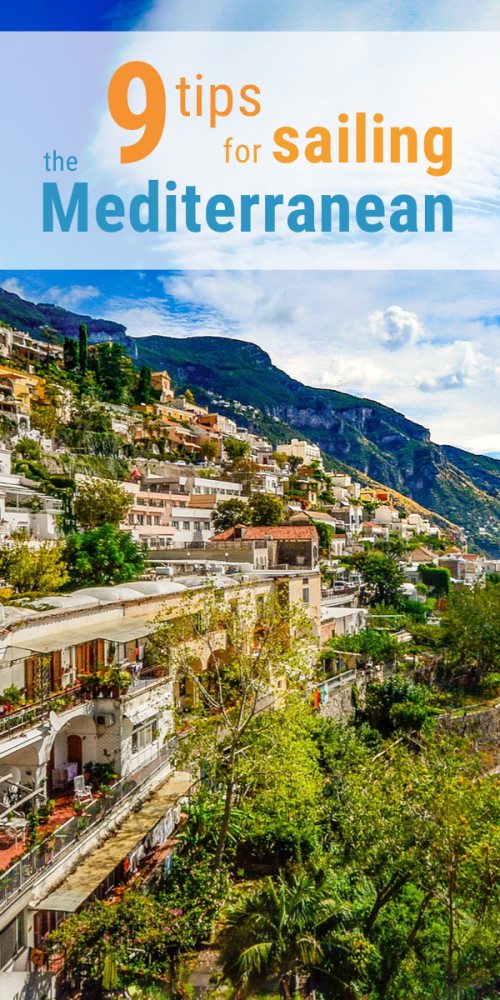
Did you find the answer to your specific question?
👍 10 👎 1
Comments
Ian shepherd
Hi Shawn, some very interesting information you have and was wondering if you might be able to provide an answer to my query. I am part of a fractional owned sailing yacht (Lagoon 40’) in the Med and wondered if you you know of any small sailing yacht Management Companies who could take care of all the logistics of management? Ie maintenance, annual wintering, insurance, etc. I see there are plenty but only for the super motor launches costing millions of €.
Regards
Ian
Leave a comment